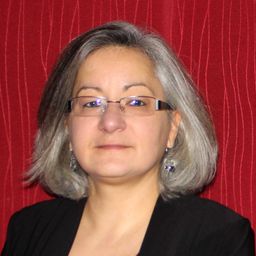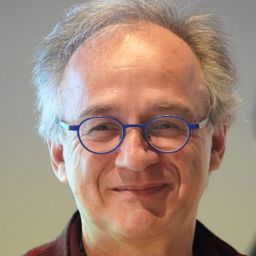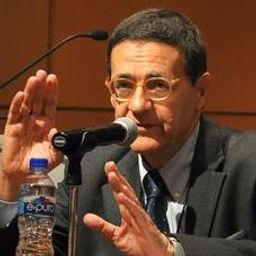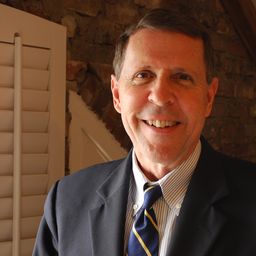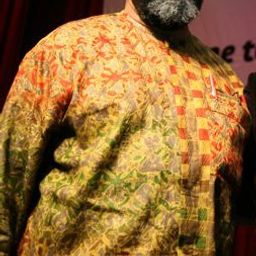
Historienne d’architecture par formation, elle s’intéresse aux idées et aux objets de l’urbanisme, notamment dans les villes de compagnie. Elle mène des recherches sur la morphogenèse et la sémiogenèse du paysage construit et sur les relations entre l’identité, la culture et les territoires comme elles se manifestent par l’entremise des pratiques patrimoniales et la production des discours sur le patrimoine. Ses travaux incluent des initiatives de recherche action sur la valorisation du patrimoine et les communautés patrimoniales en partenariat avec des collectivités locales.
Lucie K. Morisset est membre de la Société royale du Canada.
Canada Research Chair on Urban Heritage, Lucie K. Morisset is professor at the Urban and Touristic Studies Department of the School of Management, University of Quebec in Montreal.
An historian of architecture by training, she is interested in the the ideas and objects of urban planning, notably in company towns. She has been leading research on the morphogenesis and the semiogenesis of the built landscape and on the relations between identity and culture as they are manifested throughout the practices of heritage and the production of the heritage discourse, including action-research on heritage development and heritage empowerment in partnership with local communities.
Lucie K. Morisset is Fellow of the Royal Society of Canada.
Elementy, w których Lucie Morisset uczestniczy
środa 19 sierpień, 2015
Conférence de Lucie K. Morisset Cité industrielle modèle créée par l’Aluminum Company of Canada (Alcan) en 1926, Arvida se caractérise sur les scènes nationale et internationale par un patrimoine particulièrement riche et diversifié, fait d’usines, de maisons et d’histoire. On l’a notamment connue pour le rôle stratégique de son aluminerie lors de la Seconde Guerre mondiale, mais aussi pour son plan urbain, d’une envergure qui étonne encore. Aujourd’hui, cette capitale historique de l’a...
piątek 21 sierpień, 2015
Quel est le rôle des institutions muséales et des organismes de communication et de promotion touristique dans la valorisation du patrimoine industriel? Quels sont les principaux défis de la valorisation touristique du patrimoine industriel au Saguenay ? Quels sont les bénéfices qu’on pourrait espérer de la désignation d’un paysage culturel patrimonial? Table ronde animée par Lucie K. Morisset et Roger Lavoie.
piątek 6 listopad, 2015
piątek 3 czerwiec, 2016
Welcome addresses and cocktail, followed by the Concordia Signature Event "The Garden of the Grey Nuns". As the opening ceremony and cocktail take place in the former Grey Nuns' Motherhouse, recycled into campus residence and reading rooms by Concordia University, delegates will also have the possibility to discover the video Three Grey Nuns (3 minutes, by Ron Rudin and Phil Lichti. Three Grey Nuns recount their memories of communal life in the Grey Nun’s Motherhouse. Built...
sobota 4 czerwiec, 2016
What if we changed our views on heritage? And if heritage has already changed? While, on the global scene, states maintain their leading role in the mobilization of social and territorial histories, on the local scale, regions, neighbourhoods and parishes have changed. Citizens and communities too: they latch on to heritage to express an unprecedented range of belongings that no law seems to be able to take measures to contain, often to the discontent of...
poniedziałek 30 styczeń, 2017
Introduction
piątek 17 marzec, 2017
czwartek 24 sierpień, 2017
Si les usines et les infrastructures industrielles constituent une part non négligeable de l’héritage et du paysage historique du Saguenay–Lac-Saint-Jean, la préservation de leur présence dans un contexte postindustriel n’est pas sans poser problème. Aux quatre coins du monde, des dizaines de cheminées d’usines qui ont maintenu la mémoire rappellent aujourd’hui au trésor public leur présence et les onéreuses conditions de leur présence urbaine. La réutilisation des grandes nefs industrielles,...
Depuis l’apparition du patrimoine industriel, dans la foulée des premières grandes désaffectations survenues au milieu du XXe siècle, plusieurs initiatives ont vu le jour afin de favoriser la valorisation de l’héritage ainsi constitué, que ce soit par la fréquentation touristique, par l’éducation populaire ou, plus récemment, par l’entremise de structures participatives (collectes de mémoire, etc.) destinées à soutenir l’appropriation sociale. D’Ironbridge aux Routes européennes du patrimoine...
czwartek 28 wrzesień, 2017
with introductory remarks by Reverend Arlen Bonnar of St James United Church, Montreal. avec une allocution de beinvenue de Réverend Arlen Bonnar, l'Église Unie St-James, Montréal.
piątek 13 grudzień, 2019
How can research contribute to the identification of what, in a given community or environment, constitutes heritage (whatever the name that is given to it) and what are the implications of this concept on heritage practices of conservation and valuation? This session seeks to conceive how we can research this subject, what the methods and approaches might be.
piątek 14 luty, 2020
Elementy, w których Lucie Morisset attends
piątek 3 czerwiec, 2016
What does heritage change for tourism? | Le patrimoine, ça change quoi au tourisme? Ce débat veut interroger les relations entre le tourisme et le patrimoine et dépasser ainsi les idées reçues sur l'antagonisme entre le tourisme "corrupteur" et le patrimoine qui en serait la victime. Il s'agit donc de repenser le tourisme comme un réel acteur du patrimoine, de sa valorisation et de son appropriation, y compris par les populations locales. Cela présuppose, au p...
This forum will explore the current directions of critical heritage studies and what makes ACHS distinctive. Panel members will discuss what the term critical means to them, and what directions they would like to see develop in the future. To help develop an open dialogue, the session will also give considerable time to contributions from the audience.
Welcome addresses and cocktail, followed by the Concordia Signature Event "The Garden of the Grey Nuns". As the opening ceremony and cocktail take place in the former Grey Nuns' Motherhouse, recycled into campus residence and reading rooms by Concordia University, delegates will also have the possibility to discover the video Three Grey Nuns (3 minutes, by Ron Rudin and Phil Lichti. Three Grey Nuns recount their memories of communal life in the Grey Nun’s Motherhouse. Built...
Working with archival documents and the current-day morphology of the Grey Nuns' site, Dr Cynthia Hammond, Dr Shauna Janssen, in collaboration with Dr Jill Didur, will curate a series of installations and performances that speak directly to the rich heritage of a specific urban landscape: the gardens of the Grey Nuns' Motherhouse, now part of the Concordia University downtown campus. Visitors will have the opportunity to explore the lost working gardens of the Grey Nuns. As with other such...
sobota 4 czerwiec, 2016
Le patrimoine recouvre des notions et des pratiques, et désigne des objets, dont « [la] perte constitue un sacrifice et [dont la] conservation suppose des sacrifices » (Chastel et Babelon 1980). En amont de ces productions de significations et perceptions sociales, ces notions et les modes de désignation diffèrent selon les univers linguistiques, géographiques, et temporels, alors que, sous la pression d’un ‘algorithme universalisant’ (Merleau-Ponty 1969), un processus de normalisation est...
This festive event will offer delegates a taste of one of the iconic dishes of Montreal, the smoked meat sandwich, imported by Jewish immigration from Eastern Europe in the early 20th century. In particular, the tasting will allow a discovery of the products of the renowned international institution Schwartz's, the Hebrew Delicatessen for which Montrealers and tourists alike are willing to wait in long line-ups. During the tasting, “Chez Schwartz,” a documentary produced by Garry B...
Most of what we experience as heritage emerges into conscious recognition through a complex mixture of political and ideological filters, including nationalism. In these processes, through a variety of devices (museums, scholarly research, consumer reproduction, etc.), dualistic classifications articulate a powerful hierarchy of value and significance. In particular, the tangible-intangible pair, given legitimacy by such international bodies as UNESCO, reproduces a selective ordering of cul...
niedziela 5 czerwiec, 2016
"What does heritage change?" is a multifaceted question to which the answer(s) are in primary respects related to real-life negotiations among different groups of citizens, cultures, races, ethnic groups, sexual identities, and social classes about received, official and/or widely accepted or accomodated intangible attributes, cultural traditions, historic monuments, buildings, and other transmitted or revived historical legacies. Heritage designated by and for whom, for what motivations, an...


